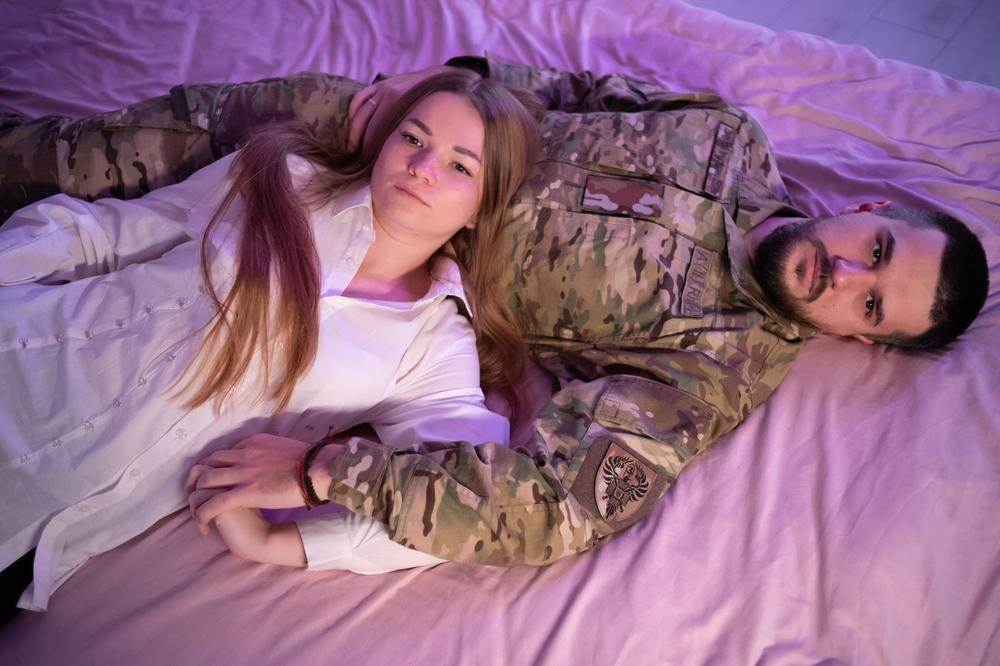The Dnipro, Ukraine’s largest river, is an artery that flows through the heart of the country. The river unites people — soldiers, rescuers, volunteers, children, artists, doctors, activists — rather than becoming a geographical barrier.
"Along the Dnipro" is a photography project in which Ukrainian photographer, Sergey Melnitchenko, tells the story of Ukrainians experiencing war on both banks of the Dnipro.
"The Dnipro holds a special place in the hearts of Ukrainians as a symbol of beauty, strength, history, and the national spirit," Melnitchenko told the Kyiv Independent.
Despite portraying a broader picture, the photo story feels deeply personal, as Melnitchenko starts with an intimate space, opening the door to the room he grew up in his hometown of Mykolaiv.
I place myself within the broader context of the project because it's impossible to stay detached or not identify with the stories of others living through the war.
He then shows his grandmother, his great-grandmother’s grave, and a residential building damaged in a Russian missile strike on Mykolaiv in 2022. His friend Ksenia and her mother, who lived on the fifth floor of this building, did not survive the attack.
"By including these pictures, I place myself within the broader context of the project because it's impossible to stay detached or not identify with the stories of others living through the war," Melnitchenko said.
Through his lens, Melnitchenko captures both everyday life and personal turning points, such as the loss of loved ones, values reevaluation, and the ongoing struggle to hold on to one's identity.
"This project not only draws attention to significant aspects of Ukrainian daily life but also serves as a testament to a period of great trials and the resilience of the Ukrainian people," he said.
Serhii, a former prisoner of war, spent two years and three months in Russian captivity, enduring brutal conditions, including beatings and psychological pressure. During captivity, his weight dropped from 90 (198 pounds) to 60 kilograms (132 pounds).
He was captured in early April 2022 at the Azovstal steel plant, Ukraine's final stronghold during the Russian siege of Mariupol. Melnitchenko photographed Serhii in November 2024, a few months after he returned from captivity.
Another striking story is that of Daria, who moved to Kyiv's countryside at the start of the full-scale war. She thought it would be safer there, but she and her family found themselves trapped under Russian occupation.
The family avoided contact with Russian soldiers, but they found them regardless. They accused Daria and her family of passing information about Russian positions to the Ukrainian Armed Forces.
After threatening and questioning the family, they took Daria away from her family for further interrogation, which escalated into sexual violence against her. When Daris came back, she found her parents paralyzed by fear, but she simply told them everything was fine.
Because of her horrific experience, Daria became a public advocate and joined an organization supporting victims of sexual violence in war.
"She works tirelessly to bring attention to the issue, fighting for the rights of survivors and urging women not to stay silent. She encourages survivors to report their cases to law enforcement so that these crimes can be documented and recognized," Melnitchenko said.
Melnitchenko planned trips in advance, but sometimes there were unexpected encounters and events. One of the things that deeply affected Melnitchenko was the Russian attack on Kyiv's Okhmatdyt Children's Hospital on July 8, 2024.
The strike on the capital, which killed 33 people and injured 121 others, struck the country's largest pediatric medical center, where 627 children were receiving treatment at the time. Melnichenko was in Kyiv at that moment and documented the consequences of the attack.
"We arrived in Kyiv to shoot a rescuer, a soldier, and a photographer waiting for her husband, who was in Russian captivity. But when the Okhmadyt attack happened, I also chose to document and include it in the project, because it depicts a spontaneous and intense scene, which differs from staged portraits," he said.
The project visited 13 cities in Mykolaiv, Kherson, Odesa, Kyiv, Cherkasy, Poltava, Dnipro, Zaporizhzhia, Ivano-Frankivsk, Kharkiv, and Donetsk oblasts from the beginning of 2023 to the end of 2024.
During their journey of approximately 10,000 kilometers (6,214 miles), Melnitchenko and his team documented the stories of over 50 individuals, took more than 5,000 photographs, and conducted in-depth video interviews.
The video archive, which includes personal and family archive materials shared by participants, will be edited into a feature-length documentary film, set for release later this year.

 Aion UT e Aion V: debutto europeo di GAC al Salone di Monaco
Aion UT e Aion V: debutto europeo di GAC al Salone di Monaco